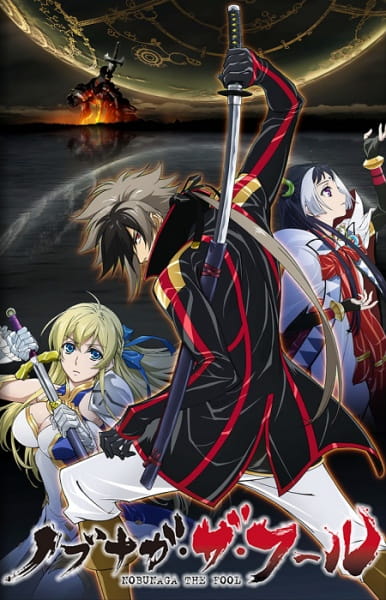There are plenty of adaptations of Oda Nobunaga's life. The themes are usually explorations of Nobunaga's character either as a hero or a villain. Not surprising as Nobunaga's visions and actions can be viewed in many different ways. In Nobunaga the Fool, he has a reputation of being impulsive and brash. Set in two fictional worlds named Eastern and Western planets, Nobunaga the Fool included famous names in world history who battled for peace by controlling lost technology known as sacred treasures.
In the Western planet, the heretical Jeanne Kaguya d'Arc saw visions of a savior-king who will put a stop to the endless wars. She and Leonardo da Vinci journeyed to the Eastern planet to find this man. Jeanne possessed a regalia, a powerful amulet that is used to operate a giant war armor. Jeanne met Nobunaga and decided to stay with the member of the Oda clan as Ranmaru. Jeanne needed to be sure that Nobunaga was the man she saw in her visions. Nobunaga however continued to disappoint her.
Among Nobunaga's friends are Mitsuhide Akechi, advisor and head of the shinobi, and Hideyoshi Toyotomi. Nobunaga's reputation in the court tested their trust in him many times. Often, Nobunaga caused trouble for his family as well.
Meanwhile, the Western planet is united under one ruler, King Arthur. Most people believed he was the true savior-king. Leonardo's escape might just be the opportunity the Western planet needed to engage the Eastern planet in a fight.
 |
| "The Fool" |
 |
| Oda Nobunaga carrying Jeanne Kaguya d'Arc |
 |
| From left: Gaius Julius Caesar, Hideyoshi Toyotomi and Mitsuhide Akechi |
Whenever I watch an adaptation of historical figures or events, there is always that nagging doubt about the quality of the series. Although Nobunaga the Fool portrayed the characters very differently from the actual people in history, they still retained some of their qualities. I think the names only meant to add depth to the characters especially during confrontations without having to spend a lot of time to build up the characters. This 24-episode series didn't make me cringe but it lacked so many things to make it a good watch.
First off, there's too much focus on drama and court intrigue than actual fighting. With such big name characters, you'd expect there'd be more focus in strategy, maneuvering of forces and one-on-one showdowns.
The setting also confused me. Although the lead and supporting characters looked like futuristic versions of the historical figures, the common people looked... common. How can two worlds with advanced fighting technology have commoners that looked like the background of a period or historical drama?
Nobunaga seemed like an average boy who's still at his rebellious change and he's not even a teenager anymore. The series tried to hard to make him look like tragic hero whose motives were misunderstood by most people but the most he did was annoy me.
Towards the end of the series, I was just anxious about trying to finish it. Initially the setting seemed interesting, but it spent too much time examining Nobunaga's and Jeanne's characters and there were a lot of details that didn't add up.
Rating: 5.5 out of 10




No comments:
Post a Comment
Comments are always welcome! Please keep it clean.